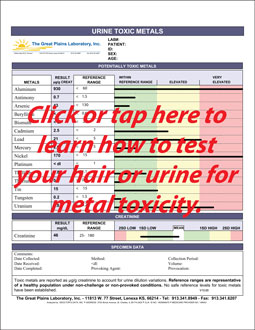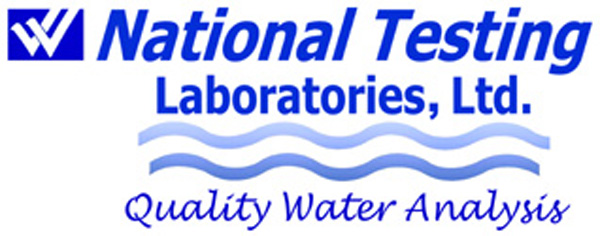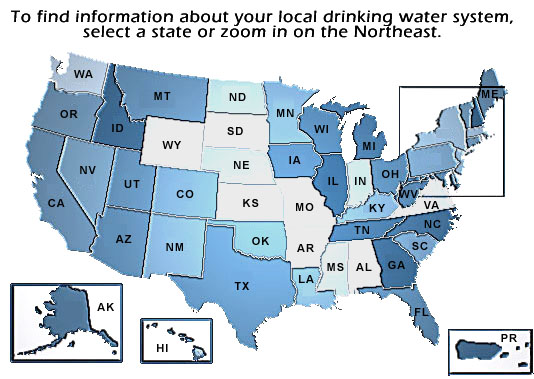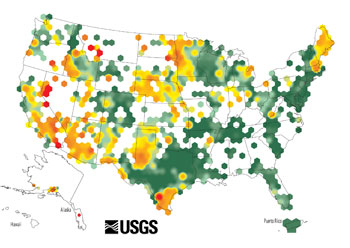
Information, Tests and Solutions to Improve
Your Health and Water Quality |
Barium Toxicity: Exposure has been associated with high blood pressure, brain swelling, heart damage, and breathing problems.
How to test your body for Barium Toxicity: Hair Metal Toxicity Test; Urine Heavy Metal TestHow to test water for Barium Toxicity: WaterCheckRecommended Barium Toxicity Water Treatment: Distillation or Reverse Osmosis[1]Barium Toxicity Sources:
Antagonistic for Barium Toxicity Uptake/Retention: The following will help the body to decrease absorption and increase elimination of Barium Toxicity. [2]
Interactions of Barium Toxicity in the Body: [2] · Displaces potassium and increases stress hormone (catecholamines). · High levels may trigger ventricular fibrillation, bronchoconstriction, and brain swelling.
Symptoms of Excessive Barium Exposure: [2] · Difficulties in breathing · Increased blood pressure · Changes in heart rhythm · Stomach irritation · Brain swelling · Muscle tingling/weakness · May damage heart, liver, kidneys and spleen.
This is not an all-encompassing metal toxicity list. There are other sources of metal exposure not listed herein.
Return form Barium Toxicity to Water Quality and Water Toxicities References
|
You are here: Home Page > Heavy Metal Toxicity > Barium Toxicity
Natural Care Solution:
Helping People Improve Their Health Naturally Since
1998
|
Quality Water Testing and Analysis for Residential and Commercial Water Sources
My Mission
Provide you with accurate information, economical and
effective tests
and products to evaluate your body and water for toxic metals and remove them if
necessary.
Keith D. Bishop
Clinical Nutritionist
B.Sc. Pharmacy
Health
Coach©

|
*These statements have not been evaluated by the Food and Drug Administration. These products are
not intended to diagnose, treat, cure or prevent any disease.
The information and contents of this website are based upon government, medical,
university and health industry research information.
Consult with your physician or a qualified health care provider before making any changes in your medical or
treatment program.
Please let us know if you have problems viewing anything or ordering on this page:
Thank you for visiting www.ToxicWaterSolution.com! If you find this information helpful or
interesting please send a link to your family and friends.
Copyright © 2007-2016 Natural Care Solution, LLC Keith D. Bishop, Clinical Nutritionist, B.Sc. Pharmacy









